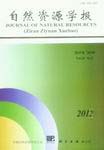Resources Ecology
SHU Bang-rong, HUANG Qi, LIU You-zhao, LI Yan, YAN Chang-qing
Assessment of ecological suitability for urban land is playing an increasingly important role in urban planning because much more pressures on regional ecosystem are put by urban expansion, which has met the needs of regional economic development. Though great achievements have been made in related researches, constant weight assessment, as normally used method, should be substituted because it possibly gets unscientific results due to the neutralization of excellent indicators and bad ones. However, the theory of variable weights proposed by Wang Peizhuang could help to overcome those problems by considering the relationship of all indicators and enhance the impacts of prominent indicators. Therefore, based on the local punishment model of variable weights, the paper presents a method of spatial fuzzy comprehensive assement in order to settle the problems of traditional methods and to reflect the characteristics of fuzziness and spatial accuracy. The evaluation index system is established by choosing seven indexes which have influence on ecological suitability for urban expansion, and a case study in Taicang city was taken under the support of GIS software, so as to guide the urban land expand rationally.It is found that the model of variable weights could calculate the weights of various indexes of every grid flexibly and reasonably, thus make initial weights of different indexes change diversely according to relationship of all indexes of different grid units. Take the index of "distance to coastline of the Yangtze River and reservoir" as an example, the index weights in different locations change from 0.0388 to 0.5774, and the weights in the locations of the Yangtze River and reservoirs reach to 0.5774, which is 198.86% higher than initial weight (0.1932), so the index could increase the comprehensive value of ecological sensitivity for urban land expansion of those grids. According to the result of ecological suitability assessment, the study area was divided into four types: suitable land, moderately suitable land, little unsuitable land and unsuitable land. The area of each type respectively is 20871.09, 6727.41, 30169.71 and 22836.51 hm2, which is 25.89%, 8.35%, 37.43% and 28.33% of the study area accordingly. Moreover, the result of ecological sensitivity value also shows that the values of the grid units range from 0 to 8.9570, and their spatial distribution accords with the fact. The study indicates that the method of spatial fuzzy comprehensive assessment based on variable weights theory could not only make scientific evaluation on the ecological suitability for urban land expansion from microcosmic and spatial perspectives, but also highlight the importance of restrictive factors and make the vetoes of bottleneck factors effective, thus it could reflect the land ecological suitability status for urban expansion more accurately and reasonably. So it is of great help to provide a scientific basis for decision-making in urban planning and land use planning.
